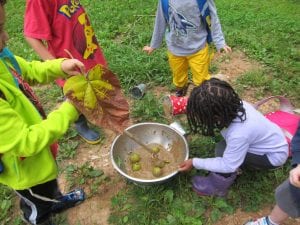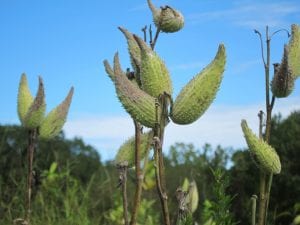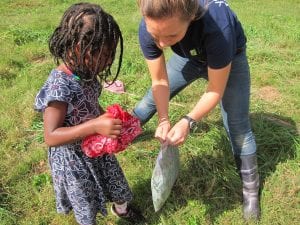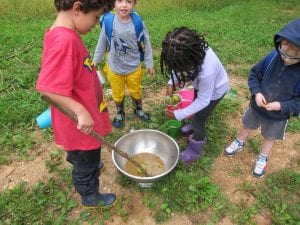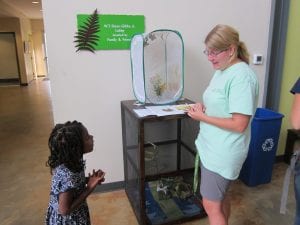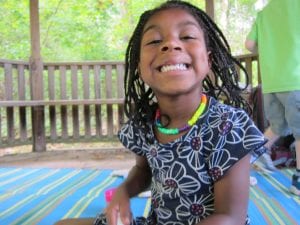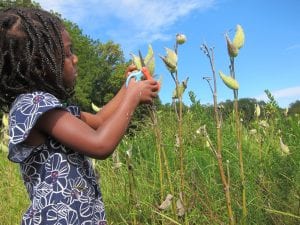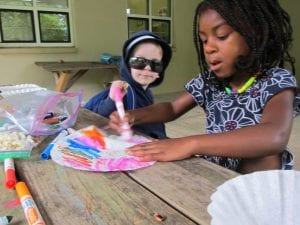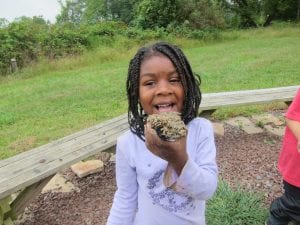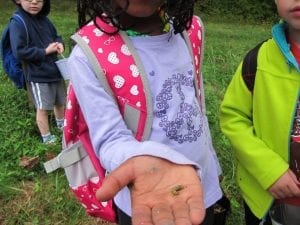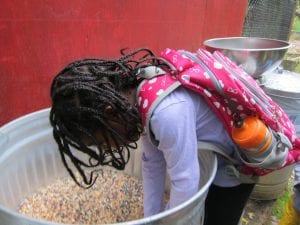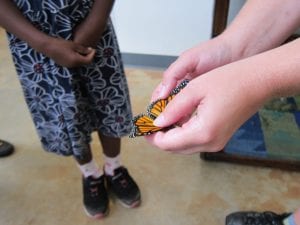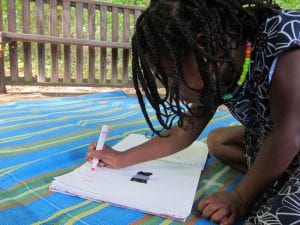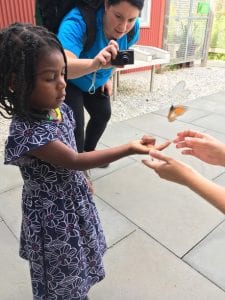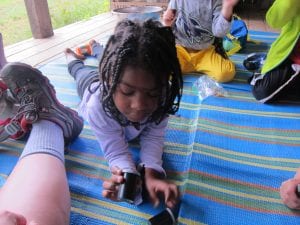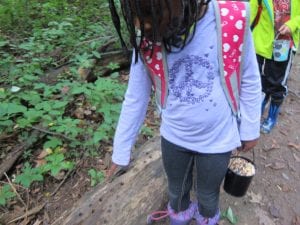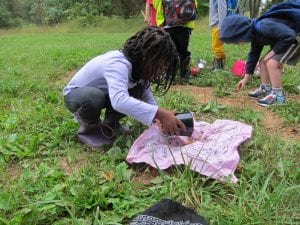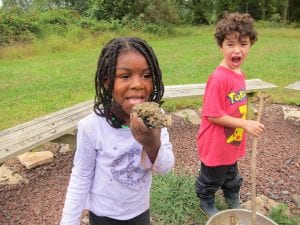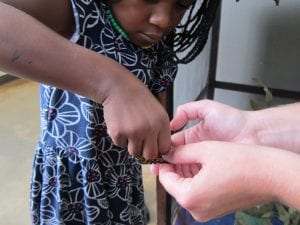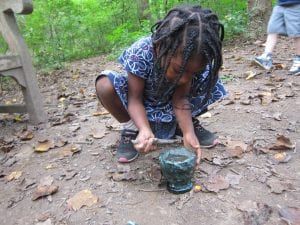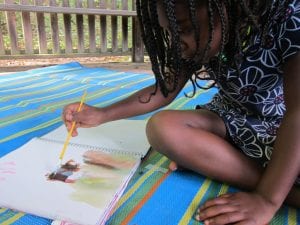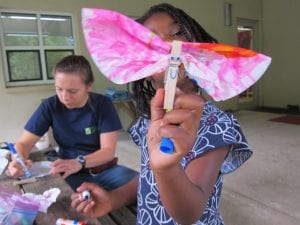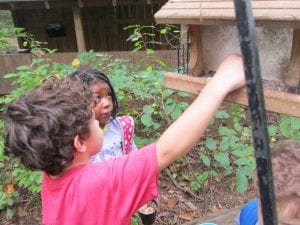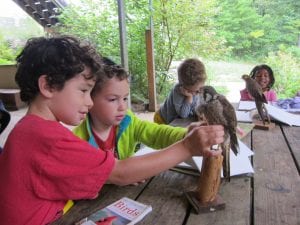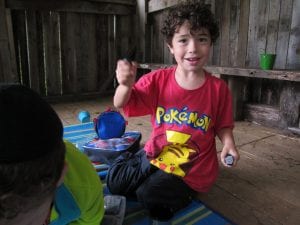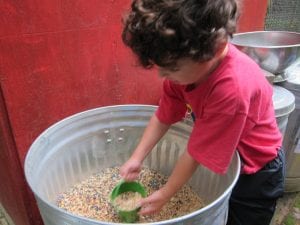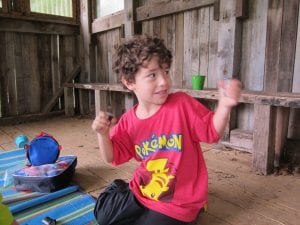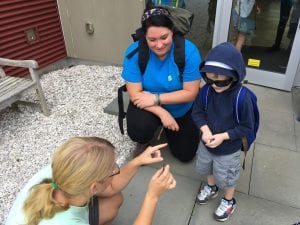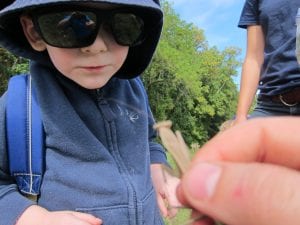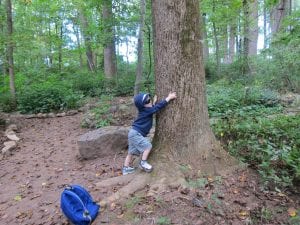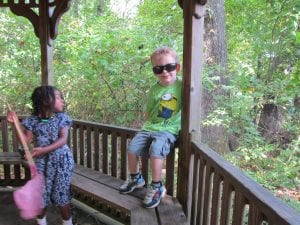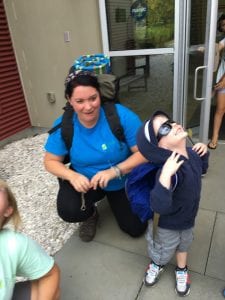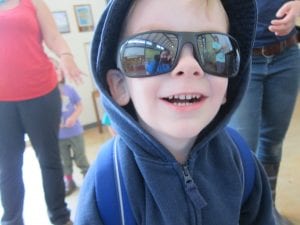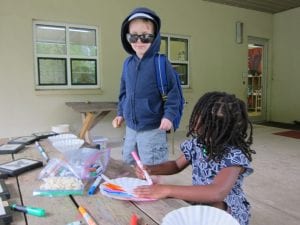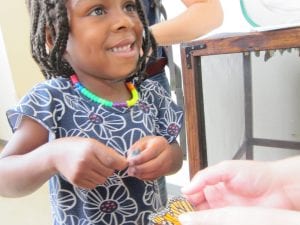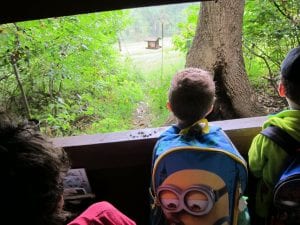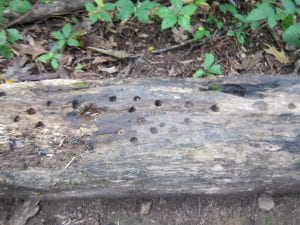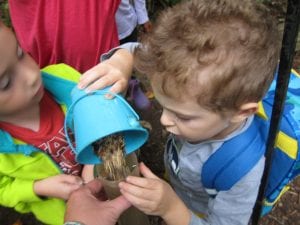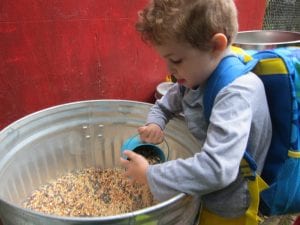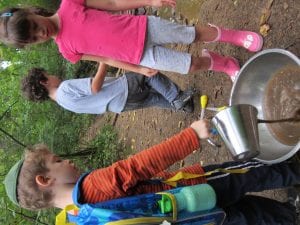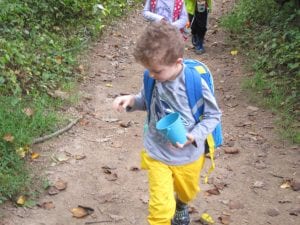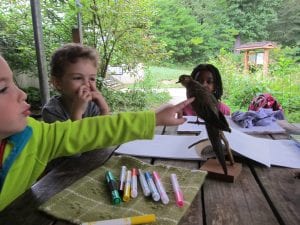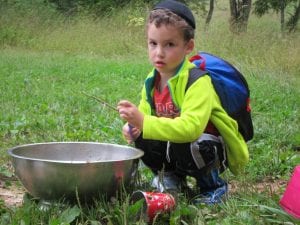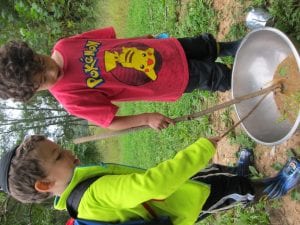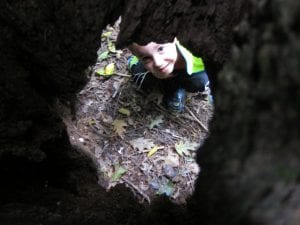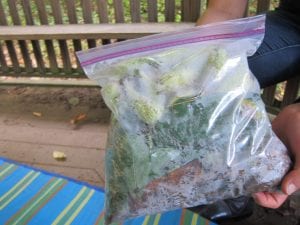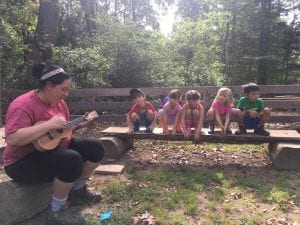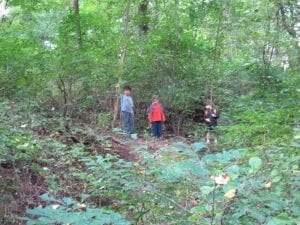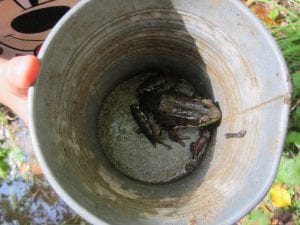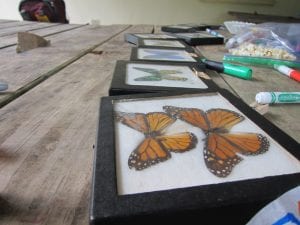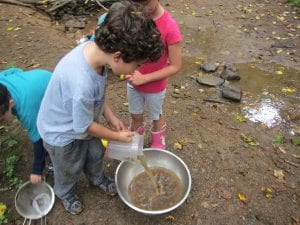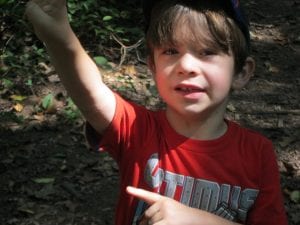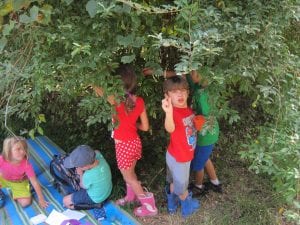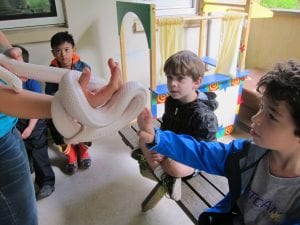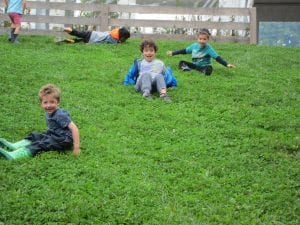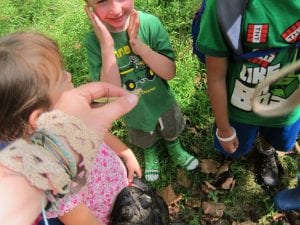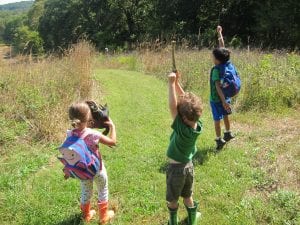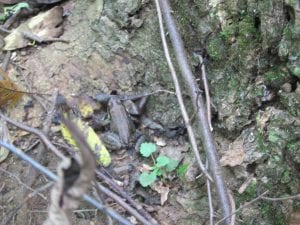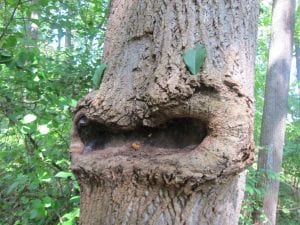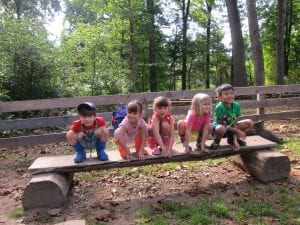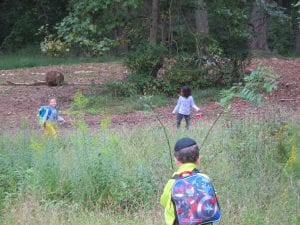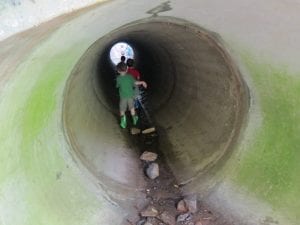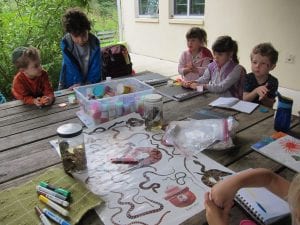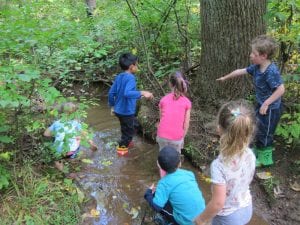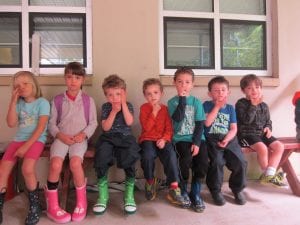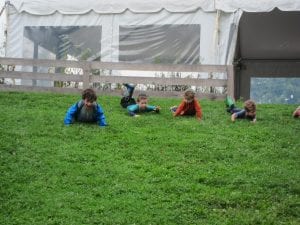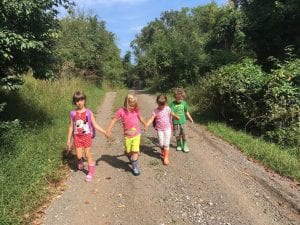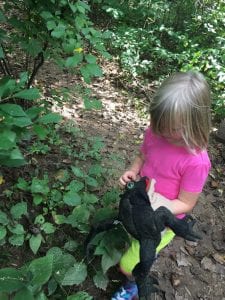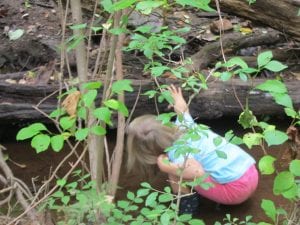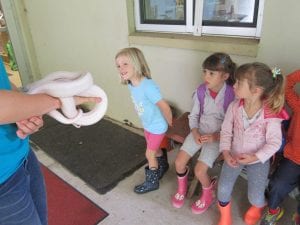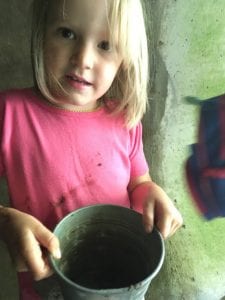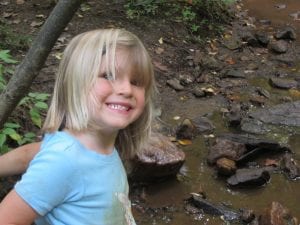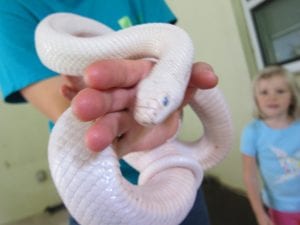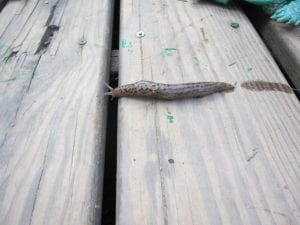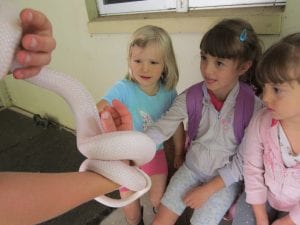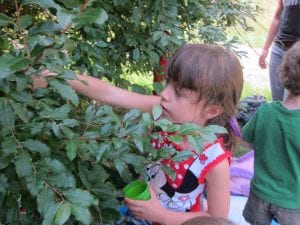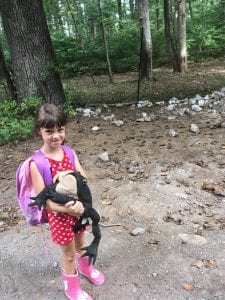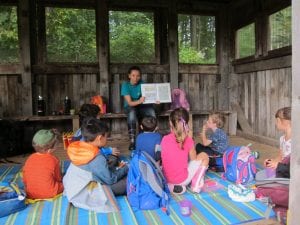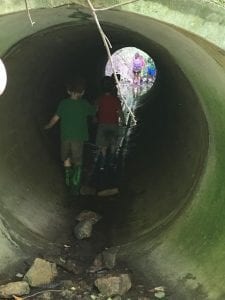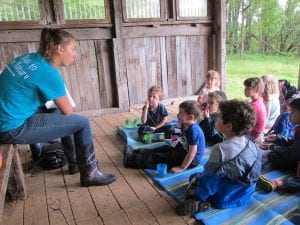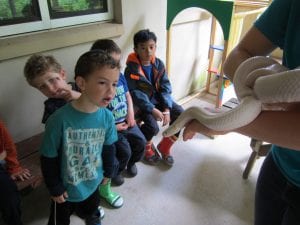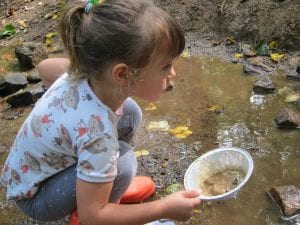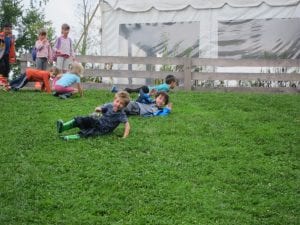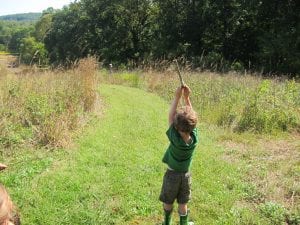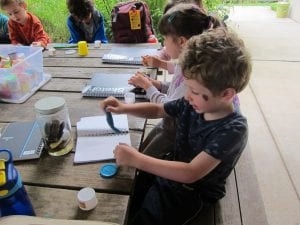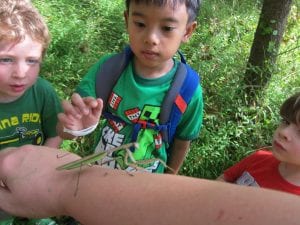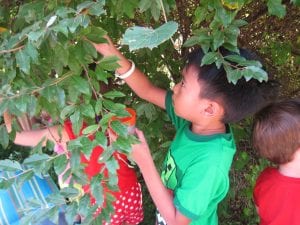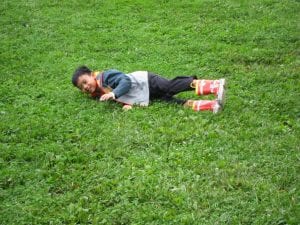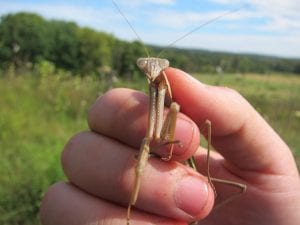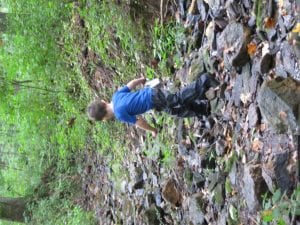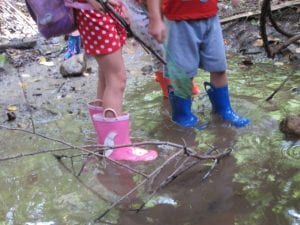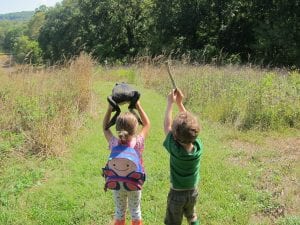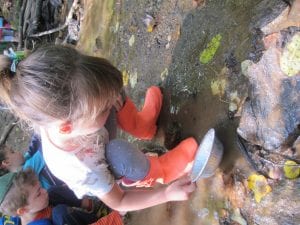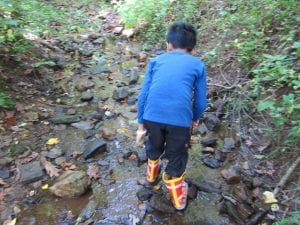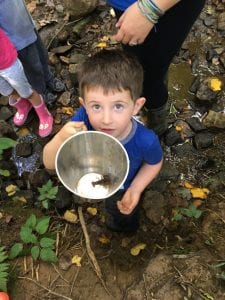This week, our Forest Scientists got up close and personal with reptiles, amphibians, birds and insects! We spent some time learning about the animals that live at Irvine and finding some of our own! Both classes got a chance to see these animals, do art projects, meet some puppets and do activities related to our discoveries. We learned how snakes shed, frogs burrow, birds scatter, and butterflies make a long journey from Irvine all the way to Mexico!
Monday/Wednesday
Our Monday class had a few extra visitors in it this week! We decided that we wanted to fill up those lonely birdfeeders in the bird blinds with some yummy seed! We each scooped a bucket and then decided how to allocate our seeds. Some scattered it along the trail, others waited and filled the feeders while others took a more creative approach and added their seeds to puddles and mud to make a delicious looking ‘meadow stew’! We took a look at some taxidermy birds and got a chance to really look at their features without them flying away!
As scientists, we have to know how to approach birds so that we may observe them. We learned a big word- homeostasis which is the time when birds feel most comfortable to come out and visit. When everything in the forest feels still and settled, they come out. We tried to creep as quietly as we could to see and we didn’t have much luck, but now we know how to do it! We read a book entitled Birds by Laura Bronznak and had a snack. We played a game where we tried to listen for matching ‘bird calls’ with shakers. Some were easy to decipher while others sounded very much alike!
On Wednesday, we had a great chance to do what Irvine Naturalists do- We each got to tag a monarch butterfly and release it into the wild! The butterflies have Irvine’s information on them and we will patiently await to see if they make it all the way to Mexico! We read a story entitled How the Butterflies Came to Be which is a Navajo folktale. In this tale, we learned that the worlds first butterflies were made with a specific ‘recipe’ of natural materials. The first butterflies actually had the power of birdsong, but the birds became jealous and demanded their songs back! That is why butterflies are silent travelers. Their beautiful colors make people happy and that is their special gift.
We created our own ‘butterfly recipe’ by adding natural ingredients to a bag and giving it a little magic. We didn’t create a butterfly, but we did make something that I believe is siting on my desk in a sealed bag starting to decompose. Looks like another lesson for another time!
- Adding black walnuts to our soup
- Regal milkweed
- Collecting milkweed
- Stirring
- Talking to Ms. Jenna
- Happy girl
- Cutting pods
- Decorating her butterfly wings
- Eating a mud sandwich
- Caterpillar!
- Scooping seed
- Getting ready to put sticker
- Journaling
- Goodbye butterfly
- Shaker game
- Who made these holes?
- Putting seed in bundle
- Yum?
- There goes sticker
- Making a recipe
- painting
- Her butterfly
- Adding seed to feeder
- Looking closely at kestrel
- He found a match
- Getting seed
- Shake it up!
- putting his finger out to let butterfly go
- Hello, mantis!
- Giving the tree a hug
- Hanging out!
- He let the butterfly go!
- Happy!
- Cool guy!
- She’s like a scientist
- Waiting for homeostasis
- Woodpecker left holes
- Filling feeder
- Scoooop!
- Making ‘chocolate milk’
- Sprinkling as he walks
- Up close with the dove!
- What?
- Stirring job!
- Boo!
- Letting our butterfly recipe steam up in the bag
Tuesday/Thursday
The Tuesday/Thursday gang were all about snakes and frogs this week! We started out class on Tuesday with a visit from a friend: a leusistic black rat snake! She is unable to produce the normal dark color of black rat snakes so she is white instead. We each had the opportunity to touch her and watch her smell us with her tongue.
On our hike to the stream, we stopped for snack fuel on the way and read a story called The Mysterious Tadpole by Steven Kellogg, about Alphonse, a strange tadpole that turns out to be a Loch Ness Monster! At the stream we explored, found frogs and even caught a crayfish. It pinched Ms. Paula when she tried to pick it up, but we transferred it into a bucket so that everyone could observe it. We spent a lot of time wandering up and down the stream looking for frogs and while we saw quite a few, we were unable to catch them. It was a lesson on what frogs do when they feel like they need to hide-burrowing!
Since we loved the frogs so much on Thursday we had some frog visitors come see us at the beginning of class on Thursday: two Gray Tree Frogs! We were able to touch them and were inspired by them to create painted frog prints in our journals. Then, with our two bullfrog puppets we headed over to Bauer Preserve to find/catch our own wild frogs! We headed down to our secret tunnel beneath the road where we caught two frogs. We found one that was huge, we identified it as a bullfrog since they can grow very large. The second one that we caught was much smaller and so we weren’t sure what type it was but we think it may have been a baby bullfrog.
We ate snack under an autumn olive tree where we read a few stories about frogs: If you Hopped like a Frog by David Schwartz and Fantastic Frogs! by Jean Cassels. We were all surprised to learn that larger varieties of frogs can even eat small animals like mice! Then gathered up as many autumn olives as we could to eat for second snack and to take home with us. On the way back to Irvine we found three praying mantises, which we noticed all had different colored eyes. We also found a bone on the trail. It became the beacon on the way back to Irvine for slow travelers: “Follow da bone!” shouted a Forest Friend!
- Acting out 5 Green and Speckled Frogs!
- Boys in their ‘hideout’
- Bullfrog
- Butterfly taxidermy!
- Adding mud to soup
- HEY!
- Picking Autumn Olives
- A visitor!
- Rolling and happy!
- Mantis says hi!
- “Follow da bone!”
- We spy a frog!
- We called this tree the “pirate”
- 5 green and speckled frogs sat on a big brown log
- Going to get more water
- Tunnel!
- Making and learning about snakes
- Everyone ready to catch!
- Forest Dreamers in deep thought!
- trying to ‘snake’ down the hill
- Friends in the making!
- Mr. Bullfrog puppet is being fed leaves?
- Searching for the elusive frog
- She loved that snake!
- Showing us what she caught!
- Well, hello there!
- Our black rat snake!
- A leapord slug left a slimy trail!
- They got a chance to touch!
- Berry picking!
- She has the frog puppet!
- We got to run through the tunnel!
- Reading about snakes!
- Woah!
- Whee!
- He was hoping the friends at the bottom of the hill would see his bone and know where he was!
- Making a playdough snake
- Mantis that pinched Ms. Paula!
- Harvesting from this tree
- Rolling like a log!
- Just a mantis in the meadow!
- On the move!
- Muddy boots!
- Follow us!
- Filling a pan with water!
- Searching in between rocks!
- Hello crayfish!
